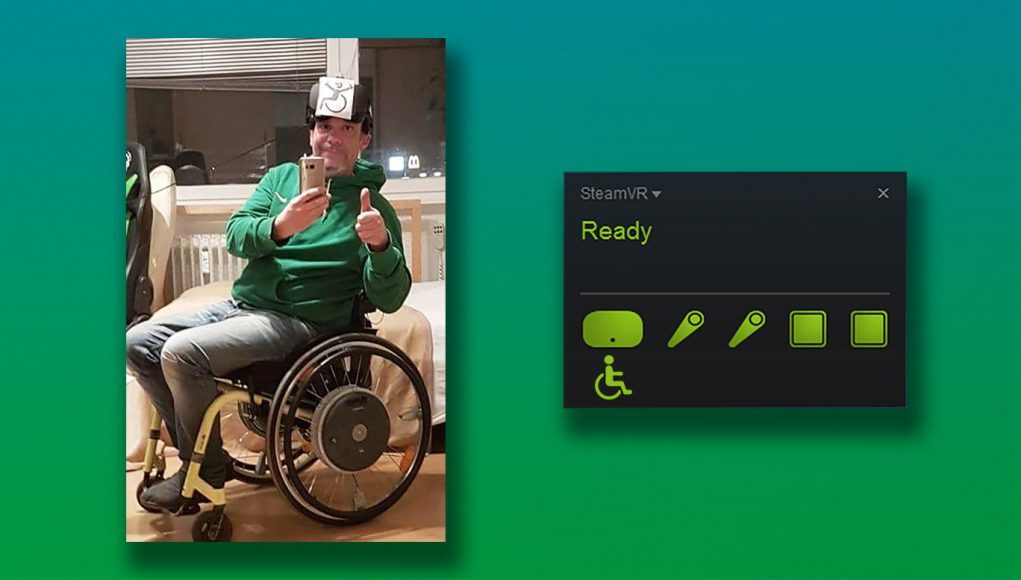WalkinVR is an upcoming driver for SteamVR designed to assist physical movement in a VR by moving or even resizing the virtual space relative to the user. It is currently in beta testing, with an initial release due at the end of May.
Artificial locomotion techniques, such as the widely-adopted teleport, or the traditional ‘left stick’ style of VR movement, are effective at enhancing standard VR movement, but they fail to adequately meet the needs of disabled people. For instance, someone in a wheelchair can comfortably teleport in VR, but may find it difficult to pick up something from the floor or from a high shelf, or to physically turn on the spot.
Developer Grzegorz Bednarski has come up with a solution that moves the entire tracked virtual space relative to the player; this functions similarly to the play space sliders in the OpenVR Advanced Settings menu, but more conveniently and smoothly, being operated using a dedicated button during gameplay. This is demonstrated with a combination of motion inputs, but it is also possible to map rotation input to external keys or pedals.
In the video above, VR games Holopoint and Job Simulator are played from a wheelchair position. Holopoint is an action-packed archery game where enemies attack from all sides, and players are required to physically dodge projectiles. Bednarski demonstrates both dodging and turning using motion controller inputs. Job Simulator is less action-orientated, but you are expected to be able to reach well below and above a normal seated position to pick up objects. Again Greg is able to achieve this with the WalkinVR driver, while staying in a static seated position, just by moving his arms.
The software also accommodates those with limited arm movement. This footage shows how the work of two motion controllers can be operated with just one, by simulating a virtual second controller that can be synchronised with head tracking. Firstly, Greg shows how operating the bow and arrow in The Lab is possible with one arm, followed by dual-wielding in Serious Sam VR: The Last Hope.
Improving the VR experience for the physically disabled is commendable, though for competitive games developers will need to be on the lookout for players who could potentially use the software to bend the rules. This footage illustrates how the virtual space is being manipulated by the driver, including the ability to scale the room relative to the player in order to gain additional virtual space for those with a small physical play area. It shows the Longbow mini-game from The Lab and Serious Sam VR: The Last Hope can be played from any position, easily gaining an unfair advantage over regular play. However, it is not just down to the developer of WalkinVR to deal with these potential problems, rather there should be an open discussion among developers about how to make VR gaming as inclusive as possible for all players.
A secondary use of WalkinVR is to improve the experience for anyone with a compromised tracking setup. In this video, Greg shows how an occlusion-limited tracking system can be made to function in a 360 degree game by artificially rotating the VR space.
Incidentally, Greg has performed all of these demonstrations using rather unusual hardware—a combination of PS Move controllers and PS3 Eye cameras hooked up to the PSMoveService to allow them to function on PC. While the HTC Vive and Oculus Rift can achieve 360 degree tracking, users with small spaces or awkwardly-positioned sensors, or using alternative solutions like PSMoveService, might benefit from WalkinVR’s control options.
WalkinVR is currently in beta, available to download at its official site.






